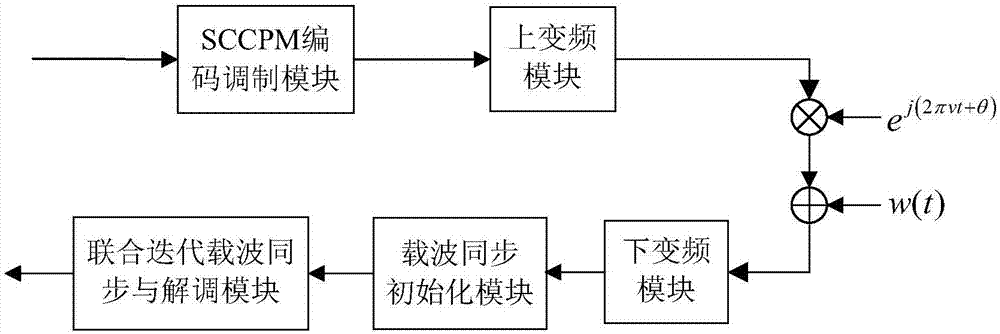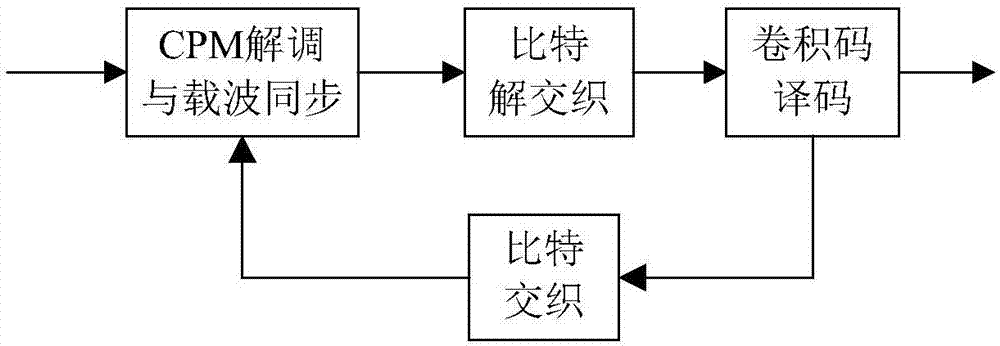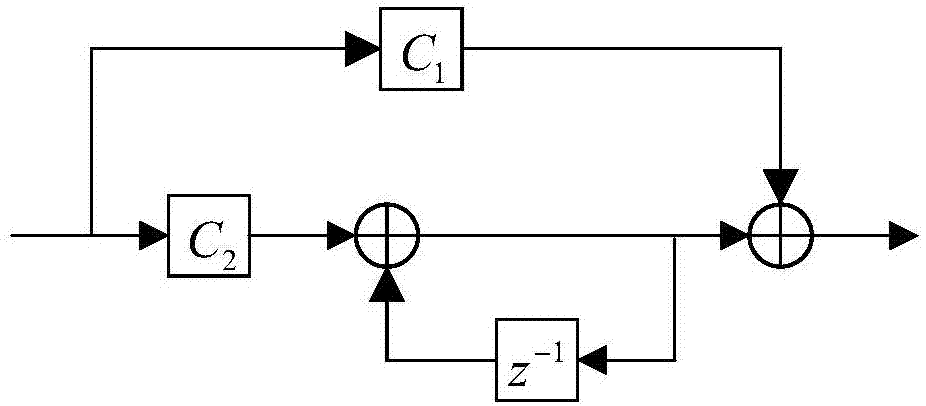Joint iterative carrier synchronization and demodulation method of SCCPM system
A carrier synchronization and joint iteration technology, applied in transmission systems, digital transmission systems, modulated carrier systems, etc., can solve problems such as systems that cannot track carrier frequency offset, achieve the effect of reducing sensitivity and improving tracking range
- Summary
- Abstract
- Description
- Claims
- Application Information
AI Technical Summary
Problems solved by technology
Method used
Image
Examples
Embodiment Construction
[0047] The present invention will be further described below in conjunction with the accompanying drawings and embodiments, and the present invention includes but not limited to the following embodiments.
[0048] The invention can be applied in the fields of telemetry communication, satellite communication, military communication, etc., realizes carrier synchronization by means of a second-order PLL structure, and realizes data demodulation by means of an iterative demodulation algorithm in an SCCPM system, thereby ensuring the reliability of communication.
[0049] The idea of the method of the present invention is: firstly use the carrier synchronization initialization module to obtain the initial carrier estimation information and the CPM bit logarithmic input probability for iteration, and then use the joint iteration carrier synchronization and demodulation module to perform carrier tracking and iterative demodulation to achieve accurate Carrier synchronization and reli...
PUM
 Login to View More
Login to View More Abstract
Description
Claims
Application Information
 Login to View More
Login to View More - R&D
- Intellectual Property
- Life Sciences
- Materials
- Tech Scout
- Unparalleled Data Quality
- Higher Quality Content
- 60% Fewer Hallucinations
Browse by: Latest US Patents, China's latest patents, Technical Efficacy Thesaurus, Application Domain, Technology Topic, Popular Technical Reports.
© 2025 PatSnap. All rights reserved.Legal|Privacy policy|Modern Slavery Act Transparency Statement|Sitemap|About US| Contact US: help@patsnap.com



